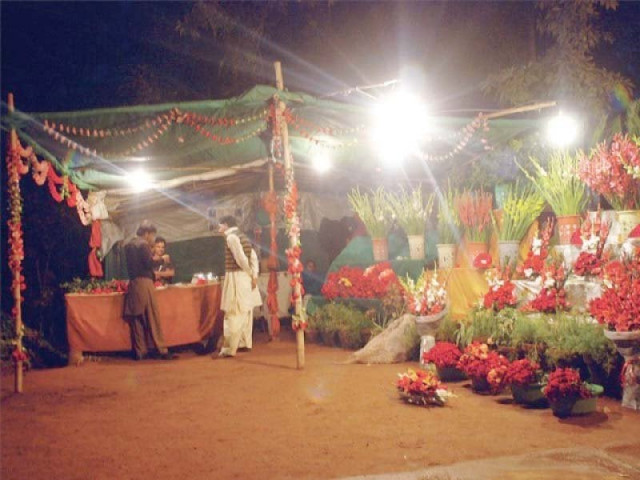Two new flower markets set to bloom in Punjab
Agriculture department to open markets in Saggian, Lahore and Tibba Sultanpur near Multan

PHOTO: FILE
According to an estimate, the current post-harvest losses hover between 20% and 30%.
The project document, available with The Express Tribune, highlights the lack of structure to deal with flowers, poor post-harvest handling practices, inappropriate packaging as well as inefficient cold storage facilities and techniques.
The absence of mechanised flower drying technology, along with lacking training and technical knowledge, are major challenges faced by floriculture field and cut flower trade.
To overcome these challenges, the document shows that the department has decided to develop two new floriculture markets at Saggian, Lahore, and Tibba, Sultanpur, besides upgrading existing flower markets at Pattokai and Chunian.
The department has also planned to give incentives to farmers for procurement of planting material, tunnel, polyhouses and drip irrigation system.
The document indicated that in the floriculture trade, value addition takes place at every step to create a novel product. Besides floriculture and pot plants, many other value-added products such as the artificial colouring of flowers, garland, bouquets, flower arrangements, dry flowers, potpourri, essential oils, flavours, fragrances, aromatherapy, pharmaceutical compounds, gulkand and rosewater can also be produced from flowers. This will help generate decent revenue for farmers.
For the moment, flowers are being dried traditionally under the shade or sun due to which they lose colour and this negatively impacts the finished product's quality and price. The department has proposed the use of dehydration technology Gruss, a Teplitz rose petal to develop dry flowers in the country. The aim is to generate new employment opportunities in rural areas besides exploring the export potential in dry flowers for value addition.
Documents further explain farmers are currently cultivating only a limited number of crops because of the high input cost and lack of knowledge about some more profitable crops for example gerbera, Lilium and carnation, which can be easily cultivated in Punjab.
It underscored the need to motivate farmers to switch over from growing conventional crops to commercial floriculture commodities products, thereby aiming to export promising crops.
It indicated that some farmers had already started growing flowers for commercial production. The document stated that if these farmers are provided with modern technologies of production and post-harvest handling of flowers, they have the capacity to compete in international markets.
In the coming years, the documents stated, the World Trade Organisation (WTO) is going to open international markets for quality flowers and Pakistan has enough potential to meet international standards with little effort.
In addition, the documents pointed out that a linkage with European markets can also be helpful to use marketing opportunities during the months from November to April when the cost of production is high due to low temperature. They added that opportunities must be availed to export live plants, especially to Middle East countries, which accept different grades of floricultural products. These include Grade-I, Grade-II and Grade-III.
The government had already allocated Rs50 million in the current year's Annual Development Programme for this intervention.
The floriculture industry comprises the cultivation and trade of cut flowers, loose flowers, cut foliage, potted plants and bedding plants. The main representatives of cut flowers are rose, chrysanthemum, tulip and carnation. Cut flowers and potted plants have an almost 80% share of world trade in ornamental plant products.
The consumption of cut flowers is concentrated in three main regions; Western Europe, North America and Japan.
At present, the USA has one-third of consumption and the largest share, followed by Germany, Italy and France.
Europe is the biggest market for the import of floriculture products. The largest exporter of floriculture products is, by far, the Netherlands with about 60% share of international export. Next to Netherlands, Columbia, Israel, Kenya and Ecuador are the biggest exporters. The total value of export of floriculture products is $50 billion as per the International Horticultural Producers Association.
According to industry experts, the cut flower market in the UAE had been growing by about 9% annually, with an estimated 200,000 cut rose stems being brought into the country every week. Fresh-cut flowers like roses, chrysanthemums, gerbera, carnation and lilies have been in great demand.
Published in The Express Tribune, January 23rd, 2018.



















COMMENTS
Comments are moderated and generally will be posted if they are on-topic and not abusive.
For more information, please see our Comments FAQ